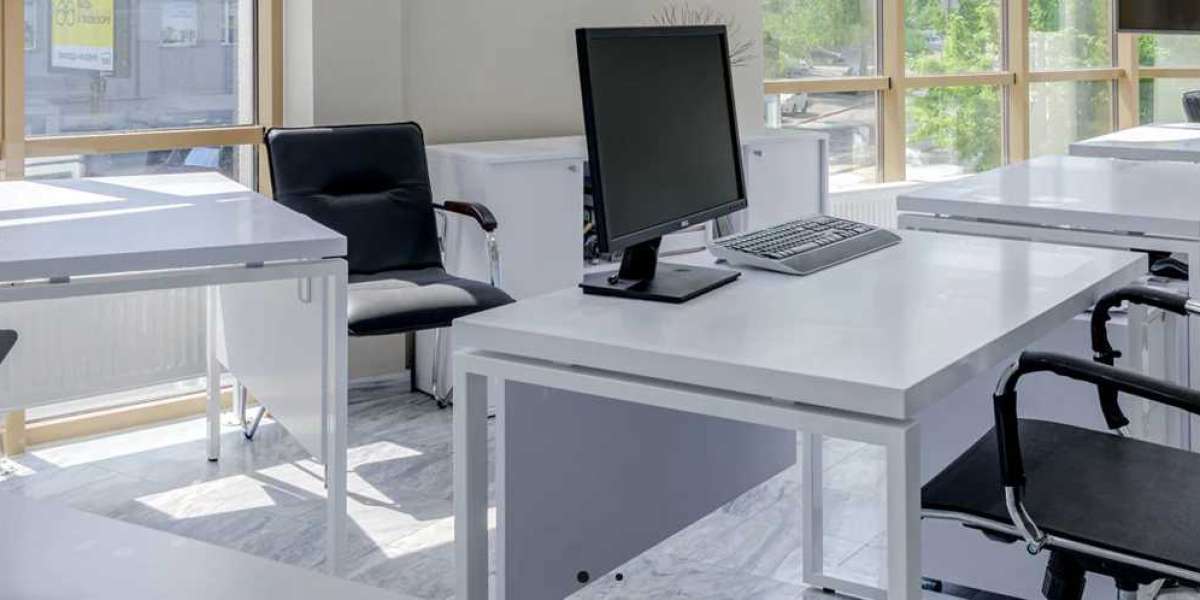Innovations shaping tomorrow’s workspaces are redefining how we approach office design, blending technology, flexibility, and employee well-being. Here’s a look at some of the key innovations that are transforming work environments:
**1. Smart Furniture
- What It Is: Furniture integrated with technology to enhance functionality and user experience.
- Examples:
- IoT-Enabled Desks: Desks equipped with sensors that monitor usage patterns, adjust height automatically, and track posture.
- Smart Chairs: Chairs with built-in sensors that provide feedback on posture and suggest adjustments.
- Impact: Improves ergonomics and personalizes the workspace experience, supporting health and productivity.
**2. Flexible and Modular Design
- What It Is: Furniture and office layouts that can be easily reconfigured to adapt to changing needs.
- Examples:
- Modular Workstations: Components that can be combined in various configurations to create different work environments.
- Movable Partitions: Panels that can be repositioned to alter office layout and create collaborative or private spaces.
- Impact: Allows businesses to quickly adapt to new work styles, team sizes, and organizational changes.
**3. Biophilic Design
- What It Is: Design principles that integrate natural elements into the workspace.
- Examples:
- Living Walls: Vertical gardens that improve air quality and add aesthetic value.
- Natural Light: Design strategies that maximize daylight and connect employees with the outdoors.
- Impact: Enhances employee well-being, reduces stress, and increases productivity by fostering a connection with nature.
**4. Virtual and Augmented Reality
- What It Is: Technologies that create immersive experiences for training, collaboration, and design.
- Examples:
- Virtual Workspaces: VR environments for remote team collaboration and meetings.
- AR for Design: Augmented reality tools that allow users to visualize and interact with furniture and layouts before implementation.
- Impact: Enhances remote collaboration, supports innovative design processes, and improves training efficiency.
**5. Sustainable Materials and Practices
- What It Is: Use of eco-friendly materials and design practices to reduce environmental impact.
- Examples:
- Recycled Materials: Furniture made from recycled plastics, metals, and wood.
- Energy-Efficient Manufacturing: Production processes that minimize waste and energy consumption.
- Impact: Supports corporate sustainability goals and creates healthier work environments.
**6. Health and Wellness Integration
- What It Is: Incorporating health-focused features into office design.
- Examples:
- Wellness Rooms: Spaces for relaxation, meditation, or exercise within the office.
- Air Quality Monitoring: Systems that track and improve indoor air quality.
- Impact: Promotes employee health and well-being, leading to higher job satisfaction and productivity.
**7. Adaptive Lighting
- What It Is: Lighting systems that adjust to natural light levels and user preferences.
- Examples:
- Circadian Lighting: Lights that mimic natural daylight patterns to support circadian rhythms.
- Smart Lighting Controls: Systems that adjust brightness and color temperature based on occupancy and time of day.
- Impact: Enhances comfort, reduces eye strain, and supports better sleep patterns for employees.
**8. Data-Driven Workspace Design
- What It Is: Utilizing data analytics to optimize workspace design and functionality.
- Examples:
- Occupancy Sensors: Devices that track how spaces are used to inform layout and resource allocation.
- Employee Feedback Tools: Systems that collect and analyze employee feedback on workspace effectiveness and comfort.
- Impact: Enables more informed design decisions and improves space utilization and employee satisfaction.
**9. Acoustic Solutions
- What It Is: Technologies and design strategies to manage and reduce noise in the office.
- Examples:
- Sound-Absorbing Panels: Acoustic panels that reduce noise and improve sound quality.
- Quiet Zones: Designated areas with noise-reducing features for focused work.
- Impact: Enhances concentration, reduces stress, and improves overall work environment quality.
**10. Personalization and Customization
- What It Is: Furniture and workspace elements that can be tailored to individual preferences and needs.
- Examples:
- Customizable Workstations: Desks and chairs that users can adjust to their personal comfort and style.
- Modular Storage: Storage solutions that can be customized to fit individual requirements and organizational needs.
- Impact: Increases employee comfort and satisfaction, supporting a more engaging and productive work environment.
**11. Remote Work Integration
- What It Is: Design elements that support remote work and hybrid work models.
- Examples:
- Dedicated Home Office Furniture: Ergonomic and space-efficient furniture designed for remote work settings.
- Seamless Technology Integration: Tools and systems that connect remote workers with their office teams and resources.
- Impact: Facilitates smooth transitions between remote and in-office work, supporting flexible work arrangements.
**12. Interactive and Collaborative Spaces
- What It Is: Areas designed to foster interaction and creative collaboration.
- Examples:
- Collaboration Hubs: Spaces with flexible seating and technology for group work and brainstorming.
- Interactive Whiteboards: Digital boards that enhance group discussions and idea sharing.
- Impact: Encourages teamwork, innovation, and effective communication among employees.
Conclusion
Innovations shaping tomorrow’s workspaces focus on creating environments that are flexible, technology-integrated, and supportive of employee well-being. By incorporating smart furniture, sustainable practices, advanced technology, and personalized design, modern workspaces are becoming more adaptable, efficient, and conducive to both individual and collaborative work. These innovations are driving the future of office design, promoting healthier, more productive, and engaging work environments.








